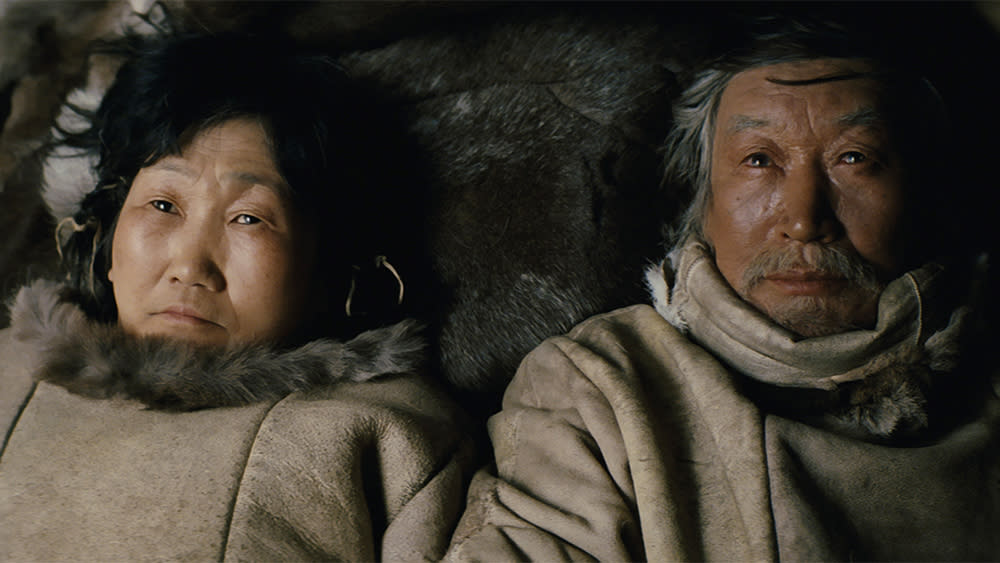Berlin Film Review: ‘Ága’

An older Inuit couple are the last members of their ethnic group living on the ice in Milko Lazarov’s handsome paean to a dying culture, “Ága.” Shooting in the Russian republic of Sakha, famed for having the northern hemisphere’s coldest climate, the director largely uses a fixed camera that firmly places his characters within their harsh white environment, capturing the timelessness of a lifestyle that ironically has reached the end of its time. Shot through with melancholy as the husband and wife witness changes around them and in themselves, the film is a more attractively atmospheric piece than Lazarov’s previous feature, “Alienation,” and could see modest festival play.
Nanook (Mikhail Aprosimov) and Sedna (Feodosia Ivanova) lead a solitary, self-sufficient existence in their yurt on a snow-covered plateau with their one sled dog. Spring is coming earlier than usual, ice fishing is no longer bountiful, and airplane exhaust trails cross the sky with ever-increasing frequency. Sedna’s also noticing that Nanook is beginning to forget things, whereas he fails to notice the large dark patch on her side that’s giving her so much pain.
There’s not another soul anywhere nearby, which makes the occasional visits of Chena (Sergey Egorov) their one lifeline to the outside world. Together with wood and fuel, he brings news of their daughter Ága (Galina Tikhonova), who works at a diamond mine at a distant town; some time ago, she did something that Nanook found unforgivable, and they’ve been estranged ever since. Sedna speaks to her husband of forgiveness, and she’s even making a new hat for her daughter out of Arctic fox fur, but time is shorter than anyone imagines.
Lazarov never has his characters explain exactly what it was that Ága did to incur her father’s wrath, but it’s fairly clear that Nanook’s disappointment stems from her earlier decision to give up the family’s traditional ways and move to town. Backed by an endless flat horizon and isolated in the featureless snow, Nanook and Sedna truly seem like the last people on earth, witnessing transformations in the sky (the airplanes) and the ground (fewer native species). Nanook and Sedna mostly speak of the past, recalling better, more plentiful days before global warming as they look at an old black-and-white photograph of themselves together as a happy family, yet the winds of change literally tear through their world when a major storm nearly knocks down their yurt, adding to the sense of fast-approaching finality.
The screenplay’s simplicity is enriched by memorable images whose stillness adds to the overall aura of a period coming to an end. Not just the vast white plain, but jagged rocky outcrops that are only seen late in the film, as if forming a boundary to the edge of the world. Also impressive is a drone shot of the cavernous circular mine where Ága works, an unnatural borehole symbolizing how mankind has desecrated the earth. Lazarov’s one relatively cheap move arrives at the end, when he accompanies close-ups of two tear-streaked faces with the emotive Adagietto of Mahler’s 5th Symphony — it takes a hard heart not to cry during the Mahler, so why use the music to force what’s already an emotional scene?
Related stories
Film Movement Takes U.S. Rights to 'Egon Schiele,' 'Welcome to Germany' (EXCLUSIVE)
Berlin Film Review: 'In the Aisles'
Berlin Film Review: 'Eldorado'
Subscribe to Variety Newsletters and Email Alerts!

